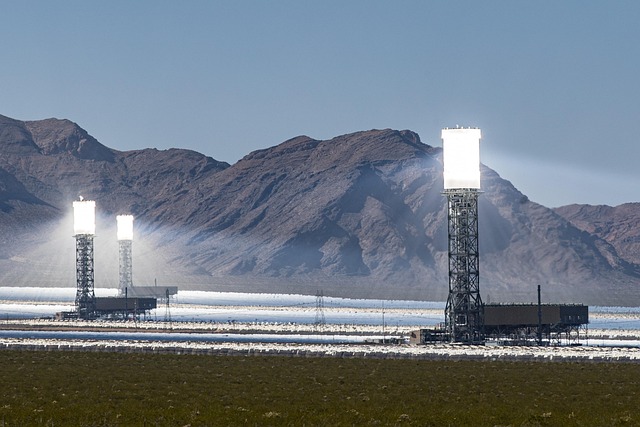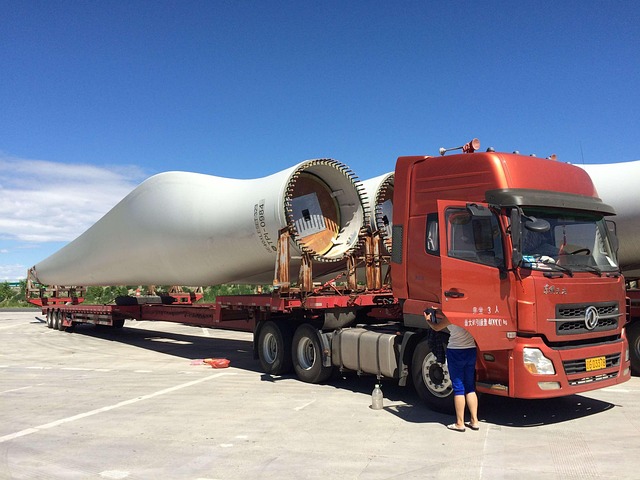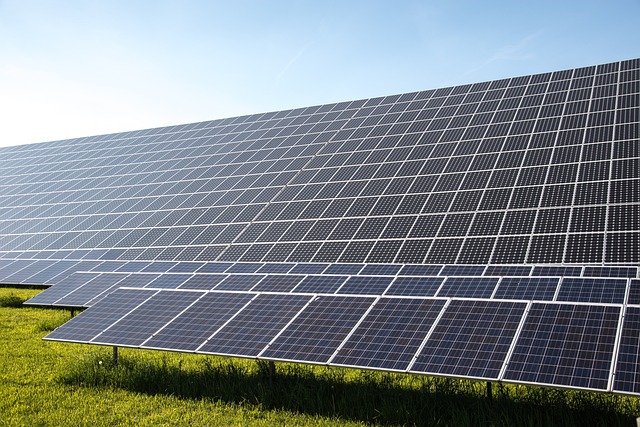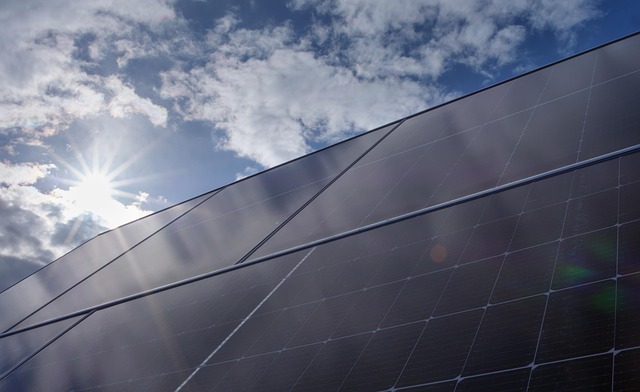
The Science Behind Solar Energy: Understanding Photovoltaics
Solar energy has rapidly emerged as one of the most significant renewable energy sources in the 21st century. As concerns regarding climate change and fossil fuel depletion mount, understanding how solar energy works, particularly through photovoltaics, is essential for embracing a sustainable future. This article will delve into the science behind solar energy, focusing on the principles of photovoltaics, their components, functioning, and the latest advancements in solar technology.
What is Solar Energy?
Solar energy is derived from the sun’s radiation and can be harnessed using various technologies. The sun emits an enormous amount of energy, approximately 173,000 terawatts, which is more than 10,000 times the world’s total energy use. Solar energy can be captured in two primary forms: thermal energy and photovoltaic energy.
While solar thermal technology captures sunlight to generate heat for various applications, photovoltaics (PV) convert sunlight directly into electricity through a particular phenomenon known as the photovoltaic effect. This article will focus primarily on photovoltaics and its separate components.
The Photovoltaic Effect
The photovoltaic effect is the basis for converting solar energy into electrical energy. It occurs when photons, the fundamental particles of light, strike a material and transfer their energy to electrons, causing them to flow and generate an electric current. This effect is the cornerstone of modern solar technology, resulting from the interaction between light and semiconductors.
Components of Photovoltaic Systems
To fully comprehend how photovoltaic systems work, it is essential to understand the primary components involved in these systems. There are several key elements that make up a typical PV setup:
Solar Panels
Solar panels are the most recognizable components of a photovoltaic system. They consist of multiple solar cells made from semiconductor materials, typically silicon. These cells are where the photovoltaic effect takes place. When sunlight hits the cells, the energy excites electrons, creating electron-hole pairs that generate direct current (DC) electricity.
Inverter
While solar panels produce DC electricity, most home appliances and the electrical grid operate on alternating current (AC). Therefore, an inverter is necessary to convert the DC electricity generated by solar panels into AC power, making it usable for everyday applications.
Mounting Structures
Solar panels must be mounted on a structure that can securely hold them in place while optimizing their exposure to sunlight. These mounting structures can be roof-mounted or ground-mounted, and their design often considers factors like tilt angle and orientation to maximize energy capture.
Battery Storage
Battery storage systems are not mandatory, but they play a critical role for some solar power users. These systems store excess electricity generated during sunny periods for use during cloudy days or at night, enhancing the reliability and efficiency of solar energy use.
How Photovoltaics Work
The process of converting sunlight into electricity via photovoltaics involves several steps:
When sunlight strikes a solar cell, it is absorbed by the semiconductor material, usually silicon. This energy excites electrons, allowing them to break free from their atoms. This phenomenon creates an electric field within the solar cell, which directs the freed electrons towards the cell’s conductive metal plates. This flow of electrons is what constitutes the electric current.
For solar cells to effectively generate electricity, they must be composed of two layers of silicon: p-type (positive) and n-type (negative). The p-type layer has a deficiency of electrons, creating “holes” where electrons can flow, while the n-type layer has an abundance of electrons. When the two layers come together, a junction forms, generating an electric field that drives electrons toward the external circuit, producing usable power.
Types of Photovoltaic Technologies
There are several types of photovoltaic technologies available today, each with distinct characteristics and efficiencies:
Crystalline Silicon Solar Cells
Crystalline silicon solar cells are the most widely used type of PV technology, accounting for over 90% of the solar market. They come in two main varieties: monocrystalline and polycrystalline. Monocrystalline cells are made from single-crystal silicon and are known for their high efficiency and performance in limited space. In contrast, polycrystalline cells are made from multiple silicon crystals and are less efficient but generally more cost-effective.
Thin-Film Solar Cells
Thin-film solar cells utilize a thin layer of semiconductor material, such as cadmium telluride or copper indium gallium selenide, to create a solar cell. While they are less efficient compared to crystalline silicon cells, they require less material, making them lighter and more flexible. Thin-film technology is particularly advantageous for specific applications, such as building-integrated photovoltaics and portable solar devices.
Building-Integrated Photovoltaics (BIPV)
BIPV combines solar elements into building materials, such as windows or roof shingles, allowing buildings to generate electricity without needing separate solar panels. This innovative approach encourages energy generation and aesthetic integration in architectural designs but typically comes at a higher cost than traditional PV systems.
Concentrated Photovoltaics (CPV)
Concentrated photovoltaics use lenses or mirrors to focus sunlight onto high-efficiency solar cells. The concentrated solar energy increases the amount of electricity produced without increasing the area occupied by the system. However, CPV systems require precise alignment with the sun and are typically suited to locations with high direct sunlight.
Efficiency of Photovoltaic Systems
The efficiency of photovoltaic systems is a critical consideration for optimizing energy generation. Efficiency refers to the percentage of sunlight that can be converted into usable electricity. Factors impacting the efficiency of solar panels include:
- The quality and type of semiconductor material used.
- The design and architecture of the solar cells.
- The angle and positioning of the solar panels in relation to sunlight.
- The temperature and environmental conditions affecting performance.
While traditional silicon solar cells typically boast efficiencies between 15% and 22%, advances in solar technologies and materials are paving the way for higher efficiencies. Some experimental setups have reached efficiencies exceeding 40%, showcasing the potential for further improvements in solar energy capture.
Environmental Impact of Photovoltaics
Despite the numerous benefits of solar energy, it is crucial to evaluate the environmental impact of photovoltaic systems. The production of solar panels requires energy and materials, which can result in carbon emissions and waste. However, solar energy generation produces no emissions during operation, and the lifecycle emissions associated with solar panels are significantly lower than those of fossil fuels.
Efforts are ongoing to enhance the sustainability of photovoltaic technologies, from improving recyclability to reducing harmful materials during the production process. As awareness of the environmental impacts intensifies, the solar industry is adopting more sustainable practices and embracing circular economy principles.
The Future of Photovoltaic Technology
The future of photovoltaics appears promising, driven by continual advancements in materials science, manufacturing processes, and energy storage solutions. Emerging technologies, such as perovskite solar cells, offer the potential to revolutionize the solar market by providing higher efficiencies at lower costs. Research in tandem with artificial intelligence is refining system design and predictive maintenance, further optimizing solar energy generation.
As the drive for clean energy accelerates, government incentives, technological innovation, and public acceptance will continue to shape the landscape of photovoltaic energy. As prices for solar technology decline and efficiency rises, expectations of greater adoption for commercial, residential, and industrial applications are on the horizon.
Conclusion
Understanding the science behind solar energy, particularly photovoltaics, is critical as society progresses towards a more sustainable future. By harnessing the power of the sun and converting it into usable electricity, we curb dependence on fossil fuels, reduce our carbon footprint, and combat climate change. Ongoing research and development will only further enhance the efficiency, affordability, and sustainability of photovoltaic technologies, making solar energy a cornerstone of the global energy landscape.
With concerted efforts and continued advancements, the solar revolution is just beginning, and the potential for harnessing the sun’s power holds remarkable promise for generations to come.



